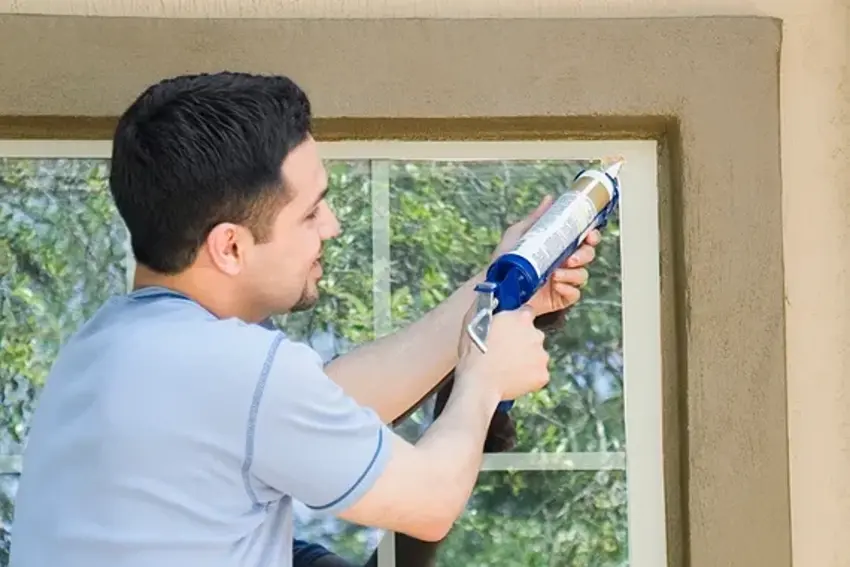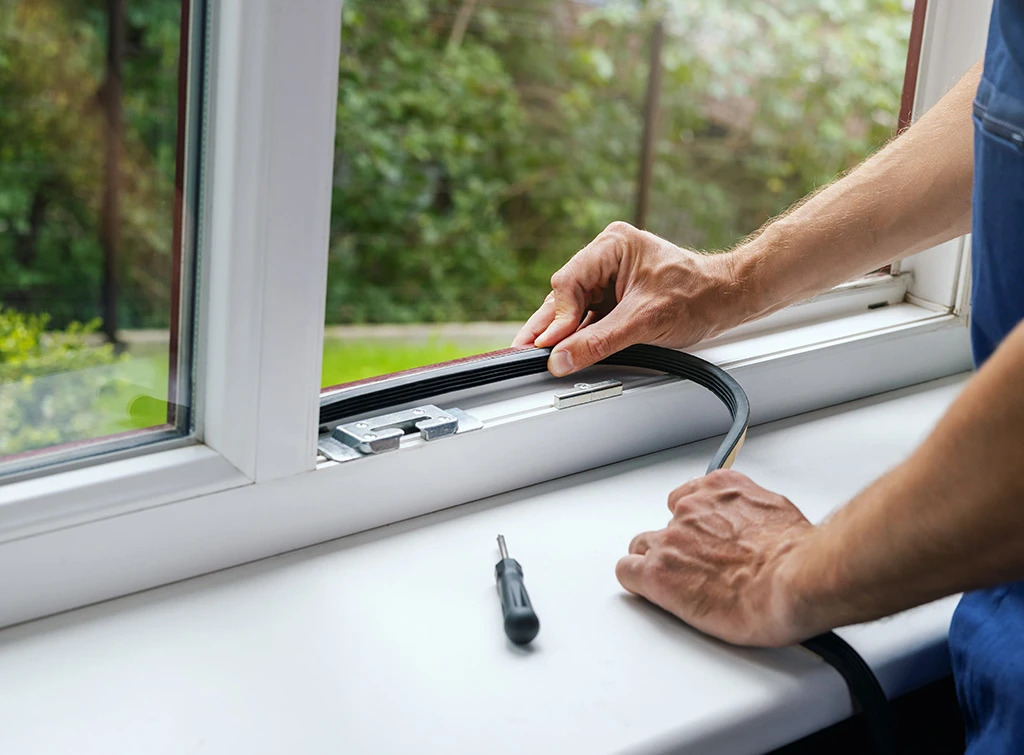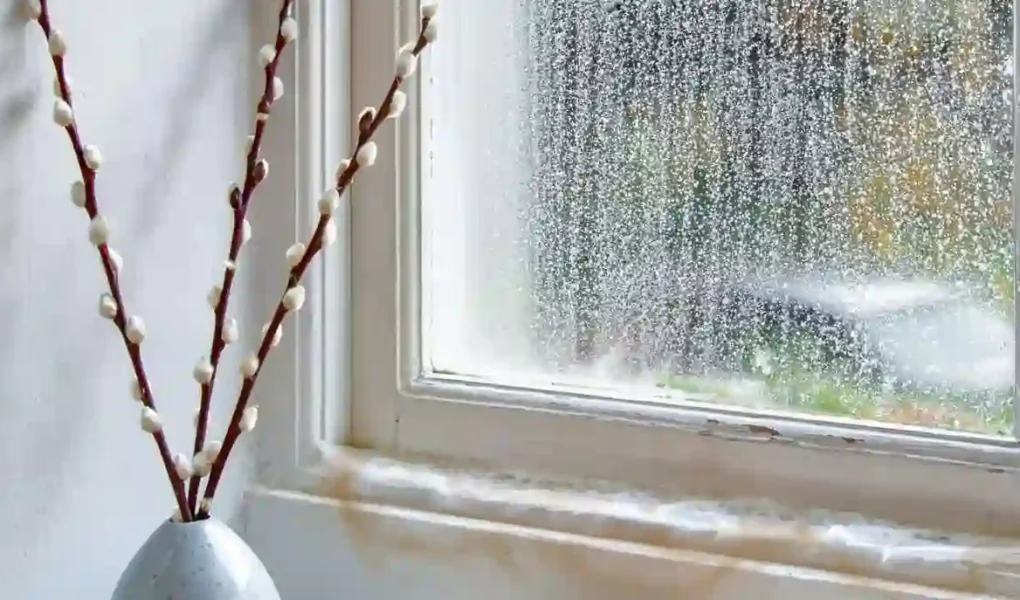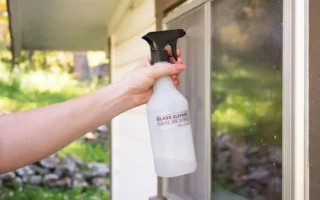Sealing a leaky window can significantly enhance your home’s comfort and energy efficiency. By identifying the source of the leak, you empower yourself to choose the right sealing material for your situation. It’s caulk, weather stripping, or even foam insulation; knowing what works best is essential. Following step-by-step sealing procedures ensures that your efforts are effective and long-lasting. Regular maintenance will help preserve those seals over time and keep drafts at bay. For persistent leaks that resist traditional methods, exploring alternative solutions could save you from further headaches. The benefits of properly sealed windows extend beyond mere aesthetics; they contribute to energy savings and improved indoor air quality; a well-sealed window helps maintain consistent temperatures throughout your home while reducing noise pollution.
Identifying the source of the leak

Finding the source of a leaky window can feel like detective work. Start by inspecting the window frame for visible gaps or cracks. Use your fingers to feel for drafts; even small openings allow air and moisture to sneak in. Check around the edges where the window meets the wall. Sometimes, caulking wears down over time, exposing vulnerable spots that need attention. Look at the weather stripping, as it often deteriorates with age. A thorough visual inspection is crucial before applying any sealants. On rainy days, grab a flashlight and examine from inside and outside while water is running down; this can help pinpoint tricky leaks hiding behind paint or trim. Identifying these trouble areas sets you up for effective sealing solutions later on.
Common materials used to seal windows
Several materials can do the job effectively when it comes to sealing windows. One of the most popular choices is silicone caulk. Its flexibility and durability make it an excellent option for filling gaps. Weatherstripping is another common material. It creates a barrier against drafts and moisture and is ideal for moving parts like sashes or sliding windows. Foam sealant offers great insulation properties. Expanding foam fills larger gaps that other materials may need to cover adequately. Adhesive tape can be a quick fix for those who prefer something temporary. While not permanent, it’s useful during urgent repairs. Spray-on sealants are gaining traction for their ease of application. They create a protective layer without needing tools or extensive prep work.
Steps to seal a leaky window

Start by inspecting the window thoroughly. Look for gaps, cracks, or worn-out caulk. Pay close attention to corners and edges where water might sneak in. Clean the area around the leak. Use a putty knife or scraper to remove old sealant and debris. A clean surface ensures better adhesion for any new materials you apply. Choose your sealing material wisely. Caulk is popular for small gaps, while weatherstripping works well on movable parts like sashes. Apply your chosen sealant carefully. If using caulk, smooth it out with a wet finger or tool to ensure an even finish. For weatherstripping, measure accurately before cutting and pressing it into place firmly. Allow everything to cure according to product instructions before testing for leaks again. This patience pays off when you enjoy a draft-free space!
Tips for maintaining sealed windows
Regular maintenance is key to keeping your sealed windows in top shape. Start by inspecting the seals for any signs of wear or damage. This helps catch potential issues before they escalate. Cleaning the frames and glass can also make a big difference. Use a gentle cleaner to remove dirt and grime, ensuring you don’t scratch surfaces. A clean window not only looks better but functions more efficiently. Check for condensation between panes as well. If you notice this, it often indicates that the seal has broken, allowing moisture inside. Addressing these problems promptly will save you time and money later on. You are applying weatherstripping where needed, especially around movable parts like sashes. This small addition can significantly enhance insulation.
Alternative solutions for persistent leaks

When traditional sealing methods fall short, exploring alternative solutions for persistent window leaks is time. One option is to install a storm window. This additional layer can provide insulation and shield against harsh weather. If you want something more permanent, consider replacing the entire window unit. Newer windows come with improved technology that enhances energy efficiency and prevents leaks. For those who prefer an easier approach, using caulk or expanding foam can help fill gaps that cause leaks. These materials are particularly useful in hard-to-reach areas. Another inventive solution involves applying weatherstripping around the edges of your windows. It creates a snug fit and reduces airflow between the frame and sash. Sometimes, simply addressing drainage issues outside your home might resolve water intrusion problems without needing extensive repairs on the windows themselves.
The benefits of properly sealed windows
Properly sealed windows offer numerous advantages that extend beyond mere aesthetics. They significantly improve energy efficiency, helping to maintain a consistent indoor temperature. In the long run, this can lead to a reduction in heating and cooling costs. Well-sealed windows minimize drafts that can make your living space uncomfortable. This means you can enjoy a cozier environment during chilly winters and sweltering summers without constantly adjusting the thermostat. Sealing also enhances sound insulation, creating a quieter home by blocking external noise. This is particularly beneficial if you live in busy urban areas or near highways. Sealing windows helps prevent moisture infiltration. Excess moisture leads to mold growth and structural damage over time, so keeping it safe safeguards your health and property value. Properly maintained seals prolong the lifespan of your windows themselves. Investing time in this simple task pays off with long-term durability and performance benefits.




